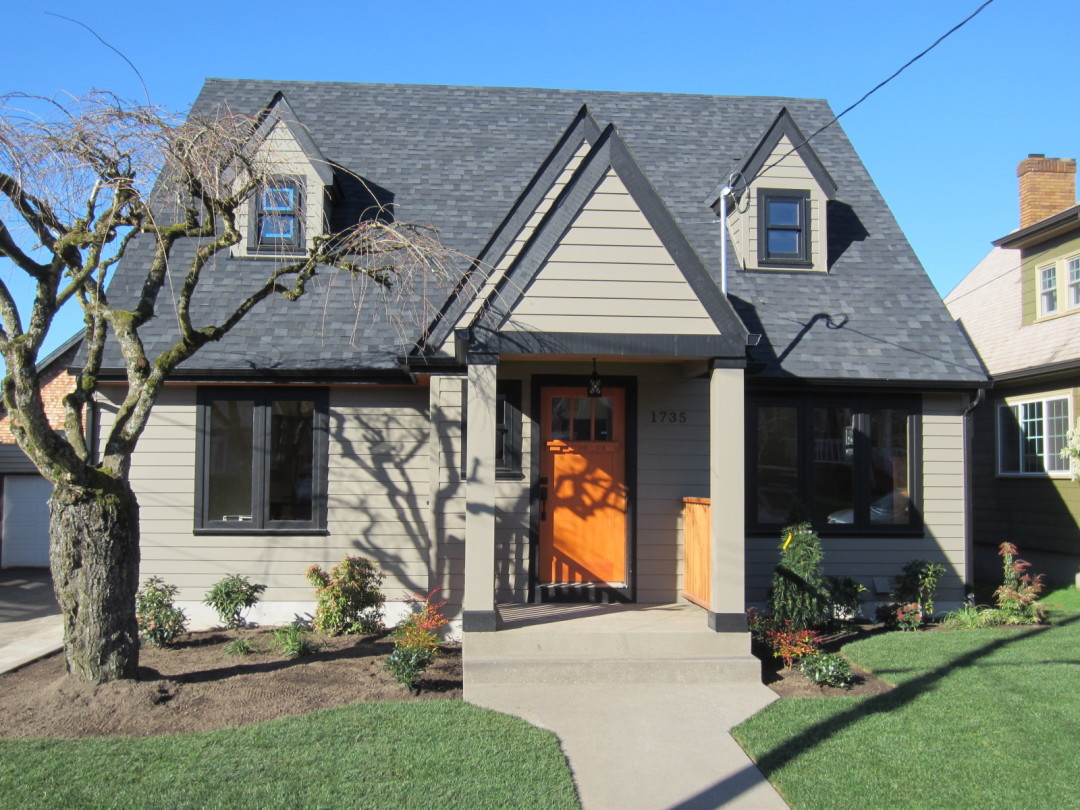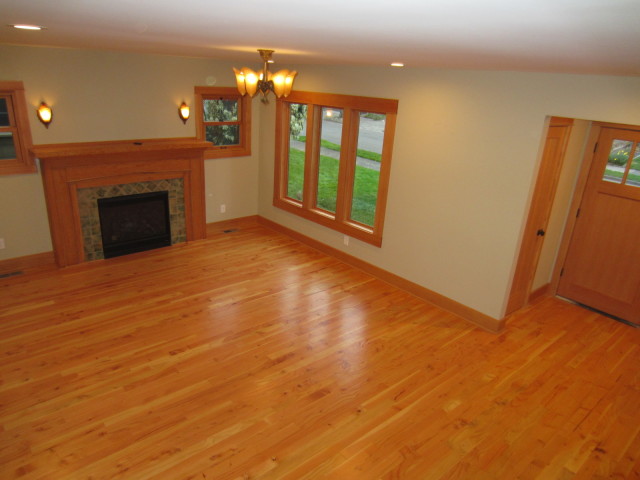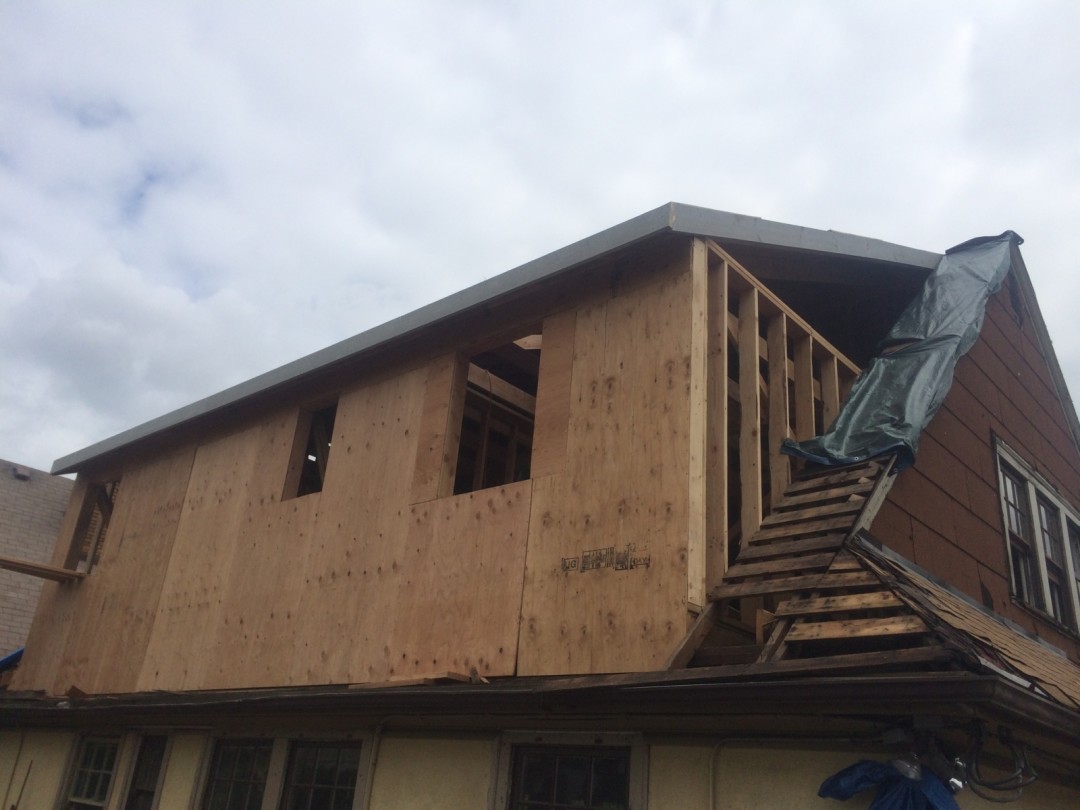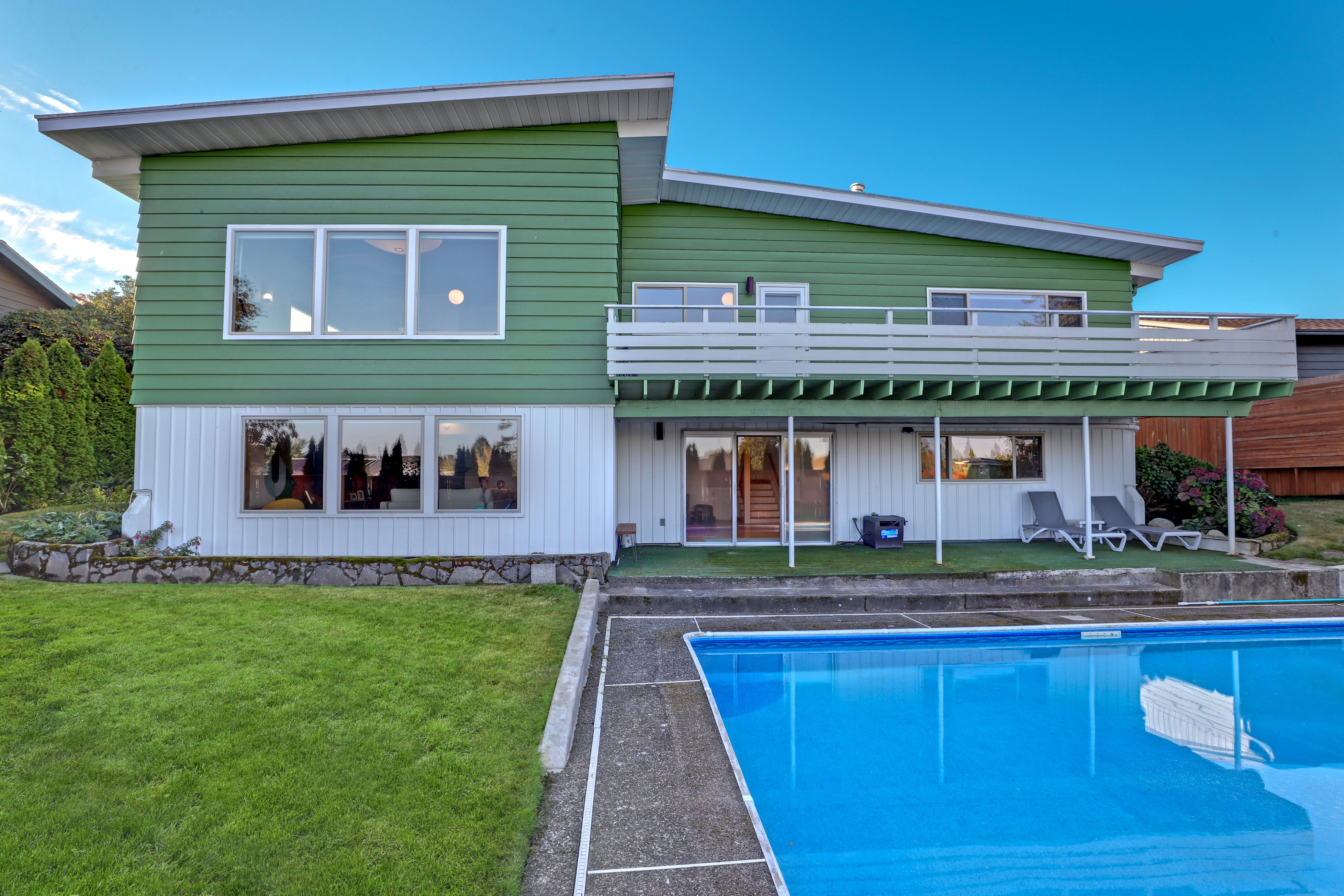5 Crucial Tips for Portland Eco-Remodelers

An all-green makeover essentially rebuilt this 1925 Craftsman in Colonial Heights. Image courtesy Mike Spina
When Mike Spina isn’t working his day job as a Port of Portland airport firefighter/paramedic, he’s renovating Portland classic homes to LEED-certified standards. Spina’s renovation of a 1925 Colonial Heights Craftsman is the city’s first home renovation to earn the green distinction, after a ground-up rebuild of its 3,600 square feet.
What do Portland’s would-be green remodelers need to know before they swing the first eco-sensitive hammer? Check out these five tips from Spina:
1. Choose a builder and crew that understand the complexities and advantages of remodeling an old Portland home. This type of project requires a completely different skill set than new construction or renovations of newer homes. It also requires a skilled crew and deep experience – and that doesn’t come cheap.
For the Colonial Heights house we followed the LEED durability and efficiency standards laid out by Earth Advantage’s LEED for Homes program. The resources offered by Earth Advantage enable everyone, from the most experienced contractor to the most novice home renovator, to develop a LEED for Homes certified house, while allowing for your own personal style and innovations. The paperwork is a bit arduous – I have a huge project manual that the LEED standards required us to establish, which documents exactly what kind of products we used and how – but I must say I get a great sense of satisfaction now flipping through those materials.
2. Plan ahead, but be ready to adapt. Once we really broke into the existing structure at the Colonial Heights house, we realized we needed major seismic upgrades and onsite water mitigation, both more time and cost intensive than expected.
To secure the old house to its foundation and complete the new construction, we added a full-length dormer to distribute the load from peak to ground, added new beams throughout, and bracketed the floor and ceiling joints (old homes are toe-nailed). When it was all said and done, we ended up replacing approximately 75 percent of the Colonial Heights house. I know that sounds terrifying, but keep in mind that permit costs are lower for renovations than for new construction. So even though the house is essentially new construction, we saved around $20,000 just in permitting by salvaging the house as a renovation.
3. Wear your personal protective gear. All of it, all the time. That means respiratory protection, gloves, boots, and glasses. If you are renovating an old Portland home, I can guarantee you will unearth lead, asbestos, and other harmful toxins. Make sure your builder is taking care of themselves, their crew, and you. Consult your local agencies for proper disposal of hazardous materials.

After!
4. As the survivor of a chemical-caused cancer, building a house with the lowest Volatile Organic Compounds (VOCs) was of utmost importance to me. Every product we used was low VOC, from the paint to the food-grade stain used on the woodwork (it’s the same type of stain used on baby toys). VOCs are a health risk for building crews and the home owner. By making simple but conscious product choices, you can produce a healthier home without taking a major hit to your pocketbook.
5. Use solid wood and locally produced products whenever possible. Many synthetic and composite products do not stand the test of time, are extremely difficult to replace/repair years down the road, and have their own health risks. Fir, cedar, and other wood species can be sustainably harvested right here in the Pacific Northwest. I harvested and processed the Douglas-fir flooring and woodwork used in the Colonial Heights house myself. The eight Douglas-fir trees that went into the 4,000 feet of board used in the house were all grown in Washington and processed in Oregon by my company, Local Investment Ventures.
I’m a native Oregonian, so it was important for me to use local products and work with local companies. The home’s windows and all the interior and exterior doors are made of fir and were manufactured in the Pacific Northwest (we worked with Milgard out of Tigard, Oregon for the windows and Simpson Door Company from Aberdeen, Washington for the doors. The cedar siding was all grown in the Pacific Northwest, and the cabinets were all made in Enterprise, Oregon by Medallion Cabinetry. Other companies, including Miller Paint, Green Depot, McCoy Wood Specialists and Tie Ponderosa Tree Farm, were all trusted, local partners throughout the construction process.

Before!




